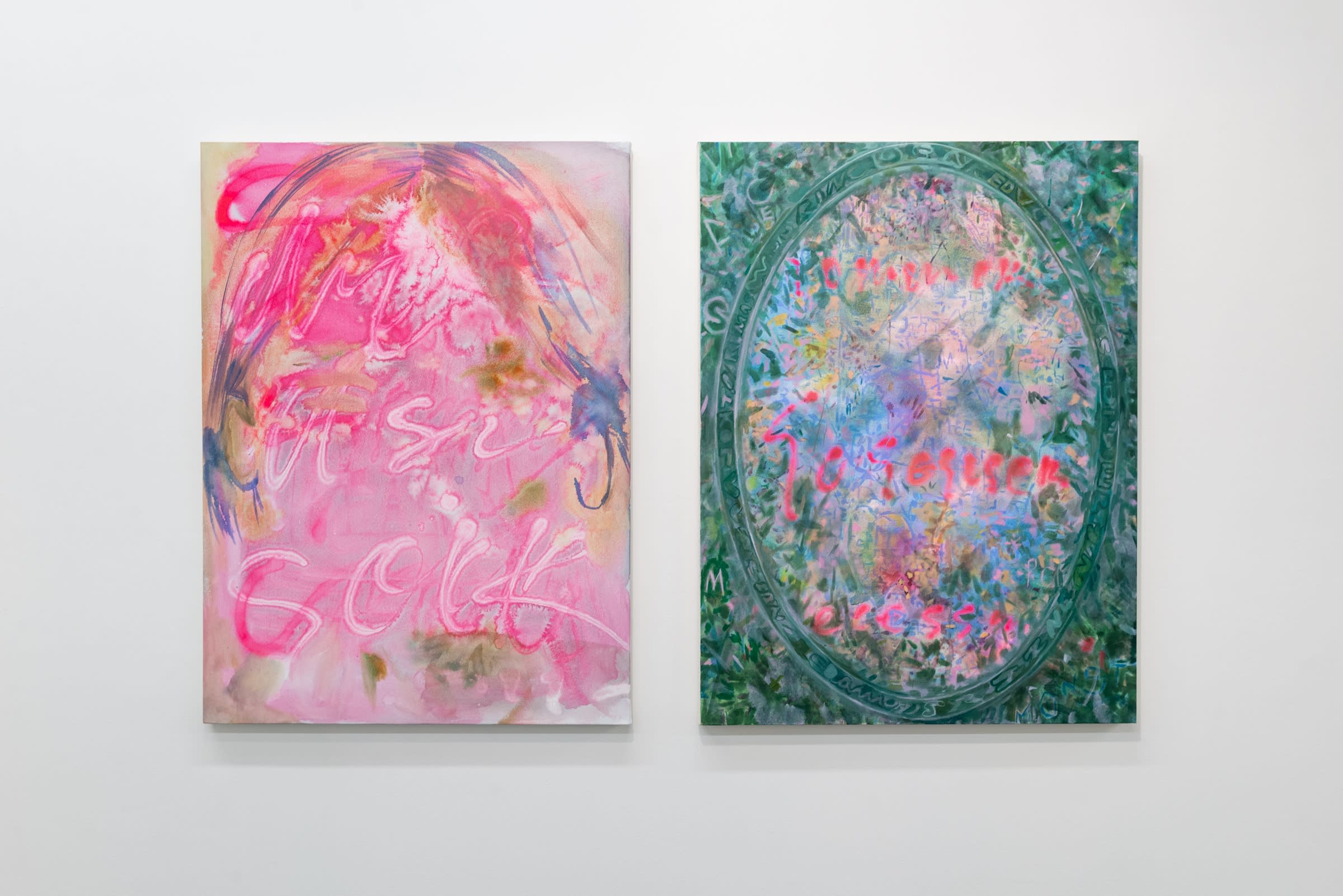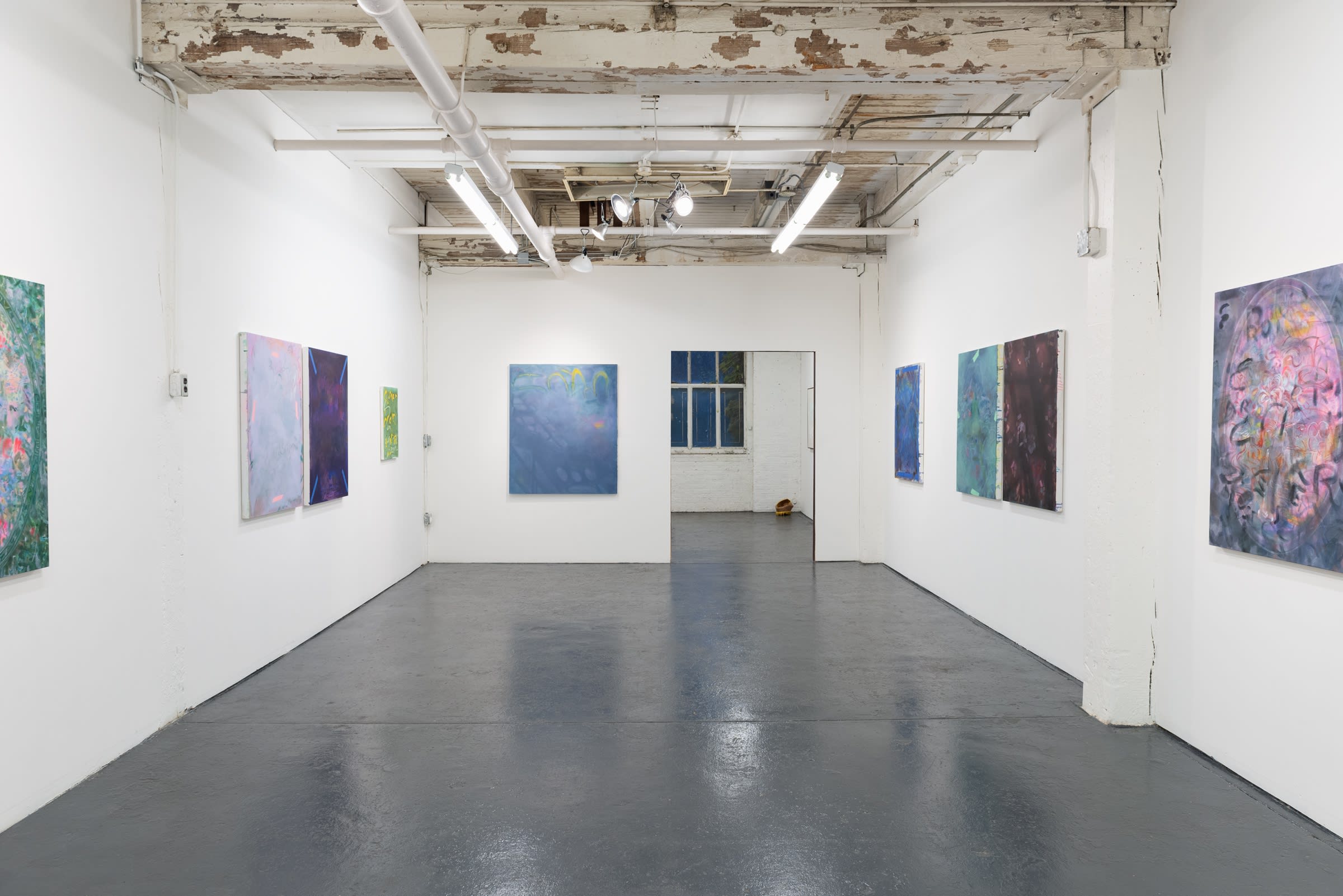It may sound trite to point out that we are living in the age of selfies; a realm built with our own hands (or thumbs?) as we construct our identity using social media and other virtual platforms. This reality deeply affects our sense of self; the way we see ourselves has been forever altered, mostly through a black mirror that fits in the palm of our hand. Literal and digital mirrors are everywhere, shaping and reshaping what we see. This is where the exhibition "sound of my father singing" begins at Goldfinch: the mirror. In her solo painting show, artist Madeline Gallucci asks, "What happens when [our] reflection is false, fabricated, or simply not there? What if our vision of ourselves is not aligned with what we see in the mirror?"

Like mirrors, Gallucci's paintings act as both surface and portal. This is especially true in Loss and Scam World. Each painting has a sort of border created by what looks like painter's tape on the surface of the canvas. However, no tape exists-it is part of the painting itself, tricking the eye and pulling you into and outside of the four edges of the canvas. A frame within a frame. These tapelike markings also imply that there is something underneath being held. But like the oval mirror shapes in the other paintings, nothing specific can be found. Again we find a field of color with shapes we can barely make out just beneath the surface.
Through Gallucci's paintings, we become hyperaware that something is missing. The absence becomes increasingly loud. By removing what we expect to see-a face, a figure, ourselves-the artist compels us to keep searching, to look inward. What would an image of ourselves, our reflection, if present, actually tell us about who we are? What vision of ourselves is the true image?




